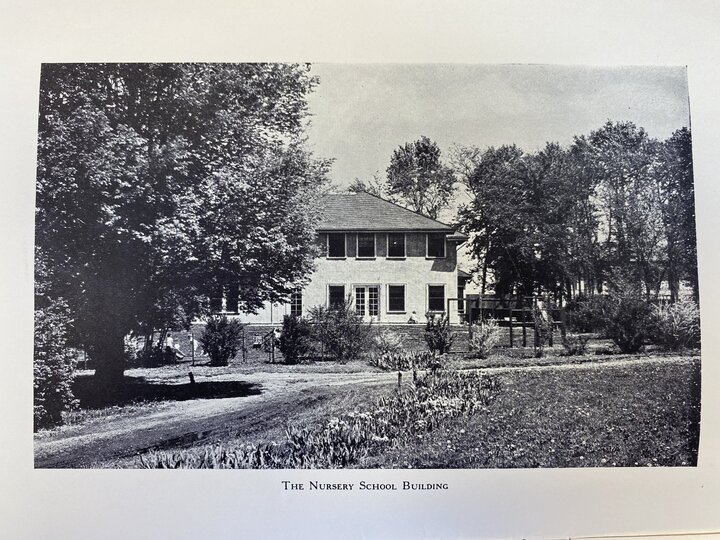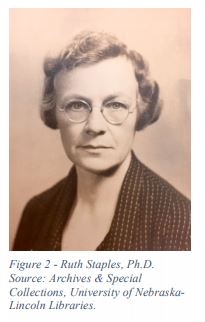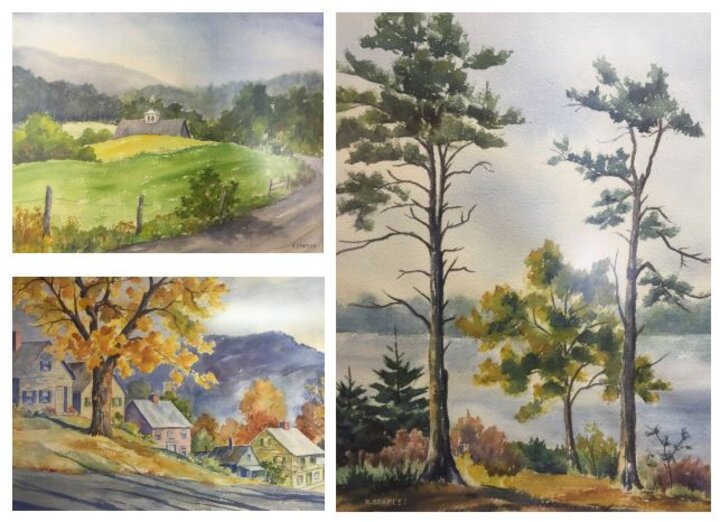The Nursery School
In 1925 the University of Nebraska established a Nursery School under the auspices of the Department of Home Economics. The mission of the Nursery School was to contribute to the welfare of each child enrolled by providing an environment designed to promote development from the aspects of physical and mental growth, emotional behavior, and social adjustment. The Nursery School was first situated on a beautiful part of the campus of the College of Agriculture and at the time was one of the first buildings in the country designed especially for a pre-school laboratory.
The relation of the Nursery school to the University was to provide an opportunity for students enrolled in the various courses in child development and in related courses to obtain a practical knowledge of the behavior and growth of young children. The lab school served as a supplement to the theoretical work and consisted of observation of the children under the direction of instructors and teachers in the classroom. In addition, the Nursery School facilitated research in the various aspects of the development of the young child.
Information and images gathered from the “Bulletin of the University of Nebraska” No. 31 Published in 1931

The First Lab School
UNL was an early leader in the study of early childhood development. It established one of the first child development labs. Dr. Margaret Fedde took the action to launch the lab school. Fedde was chair of the home economics department and wanted to create a new environment for studying child development and proposed a nursery school—“a whole building where the children can have a home atmosphere and where space may be provided for research in child development.”
The dean of the College of Agriculture granted Fedde’s request and a classroom in the Agricultural Engineering Building was converted into a temporary nursery school. Ruth Staples became the first director of what was considered one of the first laboratory schools at a university west of the Mississippi River. That was in 1925. Three years later, the nursery school found a home of its own—one specially designed as a child development lab. Located north and east of current-day Hardin Hall, the new laboratory school served until 1969.

The Impact of Ruth Staples
The CDL was under Staples' direct guidance for at least 27 years and it appears she had some influence during the years she was away earning her doctoral degree at Minnesota. When you calculate the years that her protégés took the helm, the CDL was directly or indirectly influenced by Ruth Staples for over 50 years. It could be argued that her influence remains today. In addition to her name on the outside of the building and signs welcoming visitors to the laboratory school, the work of Ruth Staples literally hangs from the walls today. When she retired, Staples took up painting, and several of her watercolors adorn the building’s conference room adding a charming, homey feeling.
Ruth Staples left an indelible mark at the University of Nebraska-Lincoln that continues today. Her teaching, research and service were fully felt on campus and in her field of child development. Certainly, she would be proud that her legacy has remained a vital part of child development history and that the facility that stands in her name on East Campus continues to enhance the lives of so many in its role as a center for teaching, research, teacher training, childcare and as a parent resource.
Content gathered from “Ruth Staples: A Legacy in Child Development” Brad Stauffer, 2016


